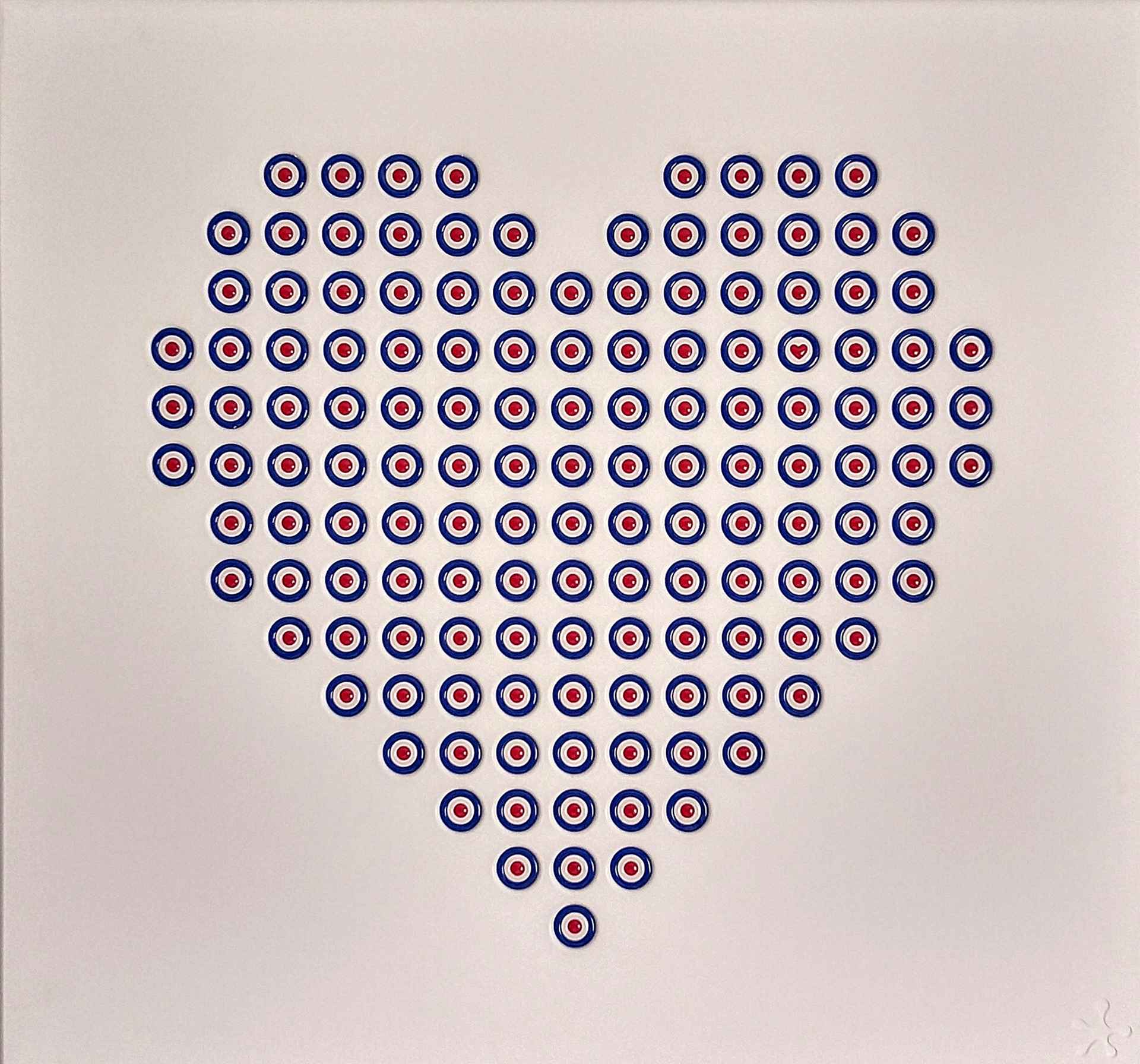
At first glance, this artwork by Birmingham-based artist Stephen Farley appears minimal, but it is nonetheless imbued with personal and cultural meaning. Made using a combination of ceramics, resin and intaglio engraving, this piece is a commemoration to the unsung working-class people during the Second World War, who would have spent most of their lives working in factories.
- Media: resin on ceramic
- Dimensions: 75 x 80 x 1cm
- Price: £2950.00
In ‘Spitfire Girls’, a more minimal piece by Stephen Farley, the artist has used pastiche and iconography from the Second World War to create an artwork to commemorate the unsung working-class factory workers of the time, particularly women. Aesthetically, we can see undeniable parallels to pop art, and it is a piece that is undoubtedly imbued with both cultural and personal meaning. With references to both personal and collective memory, this is an important piece of work to the artist, as Farley’s late mother also worked in factories during this time: “My Mom worked on the left aileron, so the wing roundel always reminds me of her.” Many works in Farley’s oeuvre are made very intuitively, with works often only given their meaning post-production. This piece is an example of perhaps a more controlled, planned piece of work, using meticulous methods such as intaglio engraving combined with ceramic and resin. Using this method, Farley engraved a collection of circles into the shape of a heart, then inlaid resin decals into each of the circles. Each of these resin decals are a pastiche of wing roundels, which is instantly familiar to most viewers, as over time the wing roundel has become an iconic symbol of the First and Second World Wars. Though a simple, recognisable icon, it is imbued with personal meaning for Farley. One of these roundels has a heart in the centre as a tribute to Farley's mother - can you spot it? The contrasting textures and tactility of this piece maintains Farley’s distinctive style, drawing the viewer in and making it impossible not to touch. This tactility is prominent in many of Farley’s works - his use of resin is a key element of his own visual language which he has developed through years of experimentation. Farley’s iconic motif, coined a spurt, is engraved to the bottom right of the piece, ensuring the artist has left his mark. The contrast of textures between the resin and the ceramic tile is satisfying to the eye – neither are trying to compete with one another, creating a certain balance and harmony to the overall piece. Renowned for his abstract, primarily resin-based works, this piece stands out amongst Farley’s collection of works - 'Spitfire Girls' is minimal and refreshing, but not without meaning.
Working and living in Birmingham, Stephen Farley is a 3D artist who works with a range of materials, most notably resin. Farley's oeuvre is multifaceted and tactile - whether a wall piece or a stand-alone sculpture - they're almost impossible not to touch, and demand to be seen in the flesh. This physical aspect of Farley's work offers new ways of experiencing art through touch, leading to many collaborations with BlindArt, a charity that supports those with sight restrictions. Stephen Farley is a versatile, exciting, and innovative artist and any artwork from his collection would make a worthwhile investment, and a valuable asset to any contemporary art collection, gallery space, or home.
Other images of Spitfire Girls by Stephen Farley ARBSA




